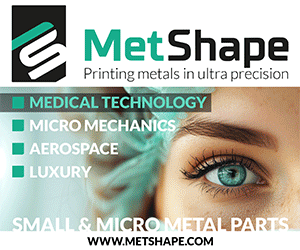Interview: Michael Bayer, Managing Director of binder and feedstock systems provider eMBe Products & Service GmbH
February 3, 2010
During a busy autumn season of major exhibitions for the European PIM industry, PIM International met up with Michael Bayer, Managing Director of German feedstock and binder supplier eMBe Products & Service GmbH at both the Euro PM and Ceramitec events. We took the opportunity to gain an insight into eMBe, the company’s offering for the PIM industry and to make the case for using ready-to-mould feedstock systems.
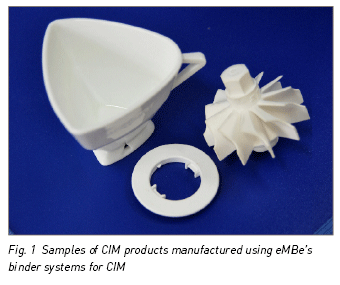 PIMI: eMBe is a relative newcomer to the binder and feedstock market. What is the history of the company, its technology and your involvement?
PIMI: eMBe is a relative newcomer to the binder and feedstock market. What is the history of the company, its technology and your involvement?
MB: As many of our customers know I was in charge of the moulding additive business in my former position with Clariant. There, during the 1990’s, I started the first project on powder injection moulding technology.
The result was the Clariant product Licomont® which is today widely used in ceramic injection moulding. I now continue the business I started with Clariant through a new company, eMBe Products & Service GmbH, based in Bavaria, Southern Germany.
PIMI: eMBe appears to be unique in that the company is willing to supply both ready to mould feedstock as well as binder systems. What was the motivation behind your decision to focus on both of these markets?
MB: eMBe does provide metal feedstocks, but not ceramic feedstocks. To provide both products a separate production line would be required. In addition to standard metal feedstocks, we work in close cooperation with our customers and focus on special, customised products. As our expertise is in binder technologies, we are happy to work with clients by providing either binder systems or finished feedstocks.
With regards to ceramic injection moulding, we support our customers with binders and moulding additives, offering new products and updates of existing ones.
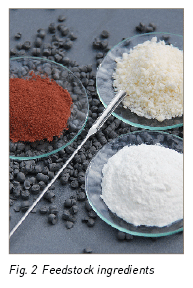 PIMI: What do you believe are the key advantages of ready-to-use feedstock for PIM, and what are the unique characteristics of eMBe’s products?
PIMI: What do you believe are the key advantages of ready-to-use feedstock for PIM, and what are the unique characteristics of eMBe’s products?
MB: The production of feedstocks and the development of suitable chemicals is an especially challenging field. This is a field which we believe is our strong point. Our customers in the metal powder industry are specialists in a different field, typically with a metallurgy or engineering background.
They have a clear understanding about the design and performance of a MIM part, but the availability of ready-to-process products is highly appreciated by them and completes their knowledge in tooling, construction and processing. As a company we feel we are not just providers of materials, it is also important that we work together with our customers as a team.
As a company I believe that we offer a high level of competence and flexibility in adapting our products to our customers’ needs and requirements. Typically, we are able to adapt flow properties, material compositions and shrink rates.
PIMI: A significant proportion of the PIM part producing community continues to manufacture their own feedstock in house, rather than buying ready-made feedstock. What in your opinion are the advantages and disadvantages of manufacturing feedstock in-house, and what advice would you have for newcomers to the PIM industry?
MB: I have been asked this question many times. If you own the process and know how it works, then you stay with your own technology and you clearly do not require a second source. At least for the time being.
If you are new to the field and want to produce MIM parts you will quickly discover that compounders, extruders etc. are much more expensive than injection moulding machines!
Finally it is important to really appreciate how much effort you need to put in to have a mouldable, consistently performing product. We believe that it is more advantageous to cooperate with a flexible and specialist partner.
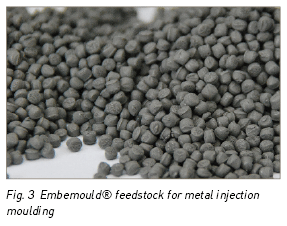 PIMI: Many MIM producers also use ready-to-use feedstock from
PIMI: Many MIM producers also use ready-to-use feedstock from
specialised suppliers. What guarantees does eMBe give customers concerning the consistency of your feedstock on a batch-to-batch basis for a given composition, and what systems do you have in place to ensure the batch-to-batch consistency of the metal powders itself?
MB: We have a strict quality management for all ingredients (chemicals made by us, and the powders) at every single process step.
A final quality control tells us if we have worked carefully according to the production instructions. For each batch of feedstock we check and control binder content, viscosity, chemical data and various properties related to thermal processing.
PIMI: What are the typical tests done by PIM producers to ascertain the key characteristics of ready-to-use feedstock such as homogeneity and rheology?
MB: PIM producers like to test products under practical conditions by observing injection parameters and evaluating the quality of parts. A very good procedure of how to quick-check the injection process is provided by Arburg. In addition, it is important to have a clear picture about the feedstock specification. This is set up by various tests such as MFI, solvent extraction, density and others. All this is documented by us in a certificate of analysis.
PIMI: The exact compositions of binders/feedstock and procedures used in PIM have traditionally been considered as proprietary secrets. Do you think this is detrimental to the acceptance of PIM technology by design engineers?
MB: No, I do not think so. A user expects that a product works in his process to his satisfaction. It is not important for him to know about compositions and details related to manufacturing processes.
PIMI: Binder removal is a key step in the PIM process. Are there any challenges still remaining in this part of the PIM process?
MB: The main challenge has been the same for many years: mould a part with minimal quantities of additive. Binders should be able to be removed simply and quickly. We try to offer simple procedures for a modern technology by using water or ethanol alcohol for the debinding of MIM parts. The challenge is to teach people to use MIM within a short time. Too much trial and error causes frustrations and lengthens the time to market.
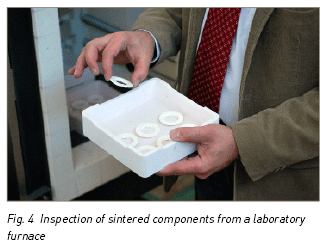 PIMI: How do you see awareness of the MIM and CIM process amongst design engineers and what challenges do you see ahead for the industry to increase its share of the precision component market?
PIMI: How do you see awareness of the MIM and CIM process amongst design engineers and what challenges do you see ahead for the industry to increase its share of the precision component market?
MB: Design engineers often don’t know of MIM existence. I believe it is still the main challenge to communicate and promote how MIM offers the opportunity to produce complex geometries in combination with high performing materials. I am convinced that this combination will drive upcoming part developments where light weighted functional parts will be required.PIMI: Is there sufficient mechanical property data and standard data available to help design engineers consider PIM technology for high performance applications, especially in the automotive industry?
MB: Yes, there are guidelines that describe the materials very well. In the US there is a MIMA Standard [Metal Injection Molding Association, www.mimaweb.org]. In Europe we are also developing a standard for MIM materials. A very helpful tool is the datasheet provided by the German MIM-Expert Circle [MIM Expertenkreis, www.mim-experten.de].
PIMI: As exhibitors at Ceramitec 2009, we at PIM International were surprised by the number of plastic injection moulders looking at the potential of CIM. What is your opinion is the potential value of CIM for plastic injection moulders?
MB: Without a doubt the implementation of CIM or MIM enriches a company that is producing injection moulded plastic parts and makes it more competitive. They are aware of tooling and injection moulding and can learn PIM in a short time.
Additionally, such a company is able to provide products consisting of a metal/ceramic component and a plastic surrounding. One example that I can suggest is a ceramic knife with a polyamide grip.
PIMI: Where do you see PIM’s opportunities for growth and as a European supplier, do you see any particular trends in terms of technology and markets?
MB: I of course see a great potential in materials which are difficult to process by casting or other mechanical processes. This is nothing new so far. There is also potential for composite materials (e.g. metal-ceramic-systems) and also two-component injection moulding is going to become an interesting area for new developments. This is probably not related to a particular region in the world. Good ideas are born world wide and we are of course free to work world wide.
PIMI: The feedstock supply business is a notoriously challenging market with a number of smaller suppliers looking to secure their positions. When changing feedstock systems, established part producers may need to adapt or change production equipment and existing tooling may not be designed with the appropriate shrinkage factor. How can you convince a company to make this major change, or are you targeting new PIM operations?
MB: Whatever you offer, the result must be a win-win-situation for the MIM manufacturer and the feedstock provider. The change to a different feedstock concept is driven either by ‘soft’ criteria such as reliability, customer satisfaction, flexibility or by ‘hard facts’ such as price, technical issues or environmental and safety issues.
I believe that there is no need, for example, to use chlorine containing solvents or other toxic substances in a MIM factory. That’s why we focus on modern materials in our binder systems, often with the benefit of using natural sources and reducing energy consumption. People working in the factory also appreciate working in a clean and non-hazardous environment.
At eMBe we try to understand our customers’ needs and aspirations within the industry. What are the technical needs? The shrinkage issue, for example, is only one of many. But it all comes down to what is the customer willing to invest.
Email: [email protected]












